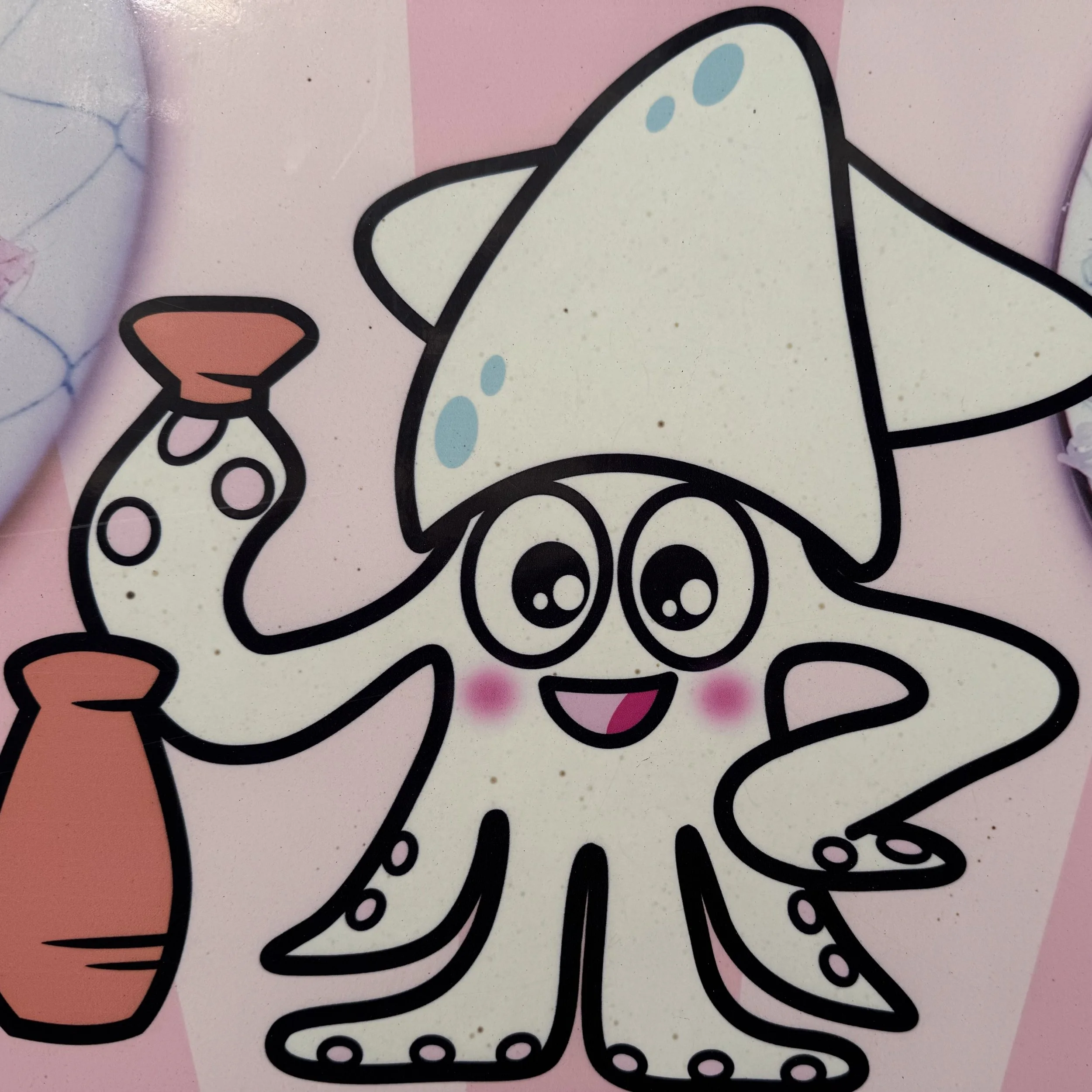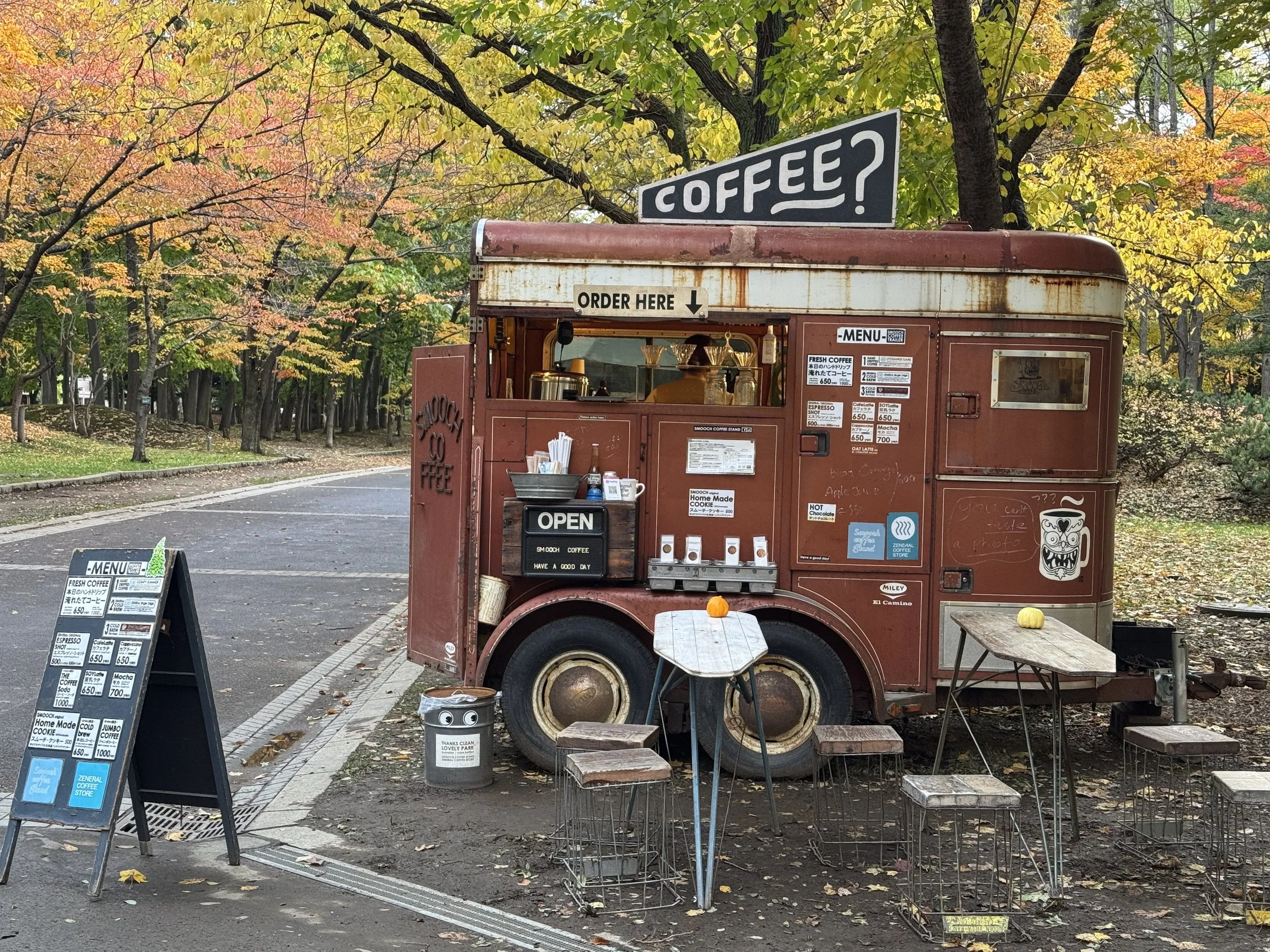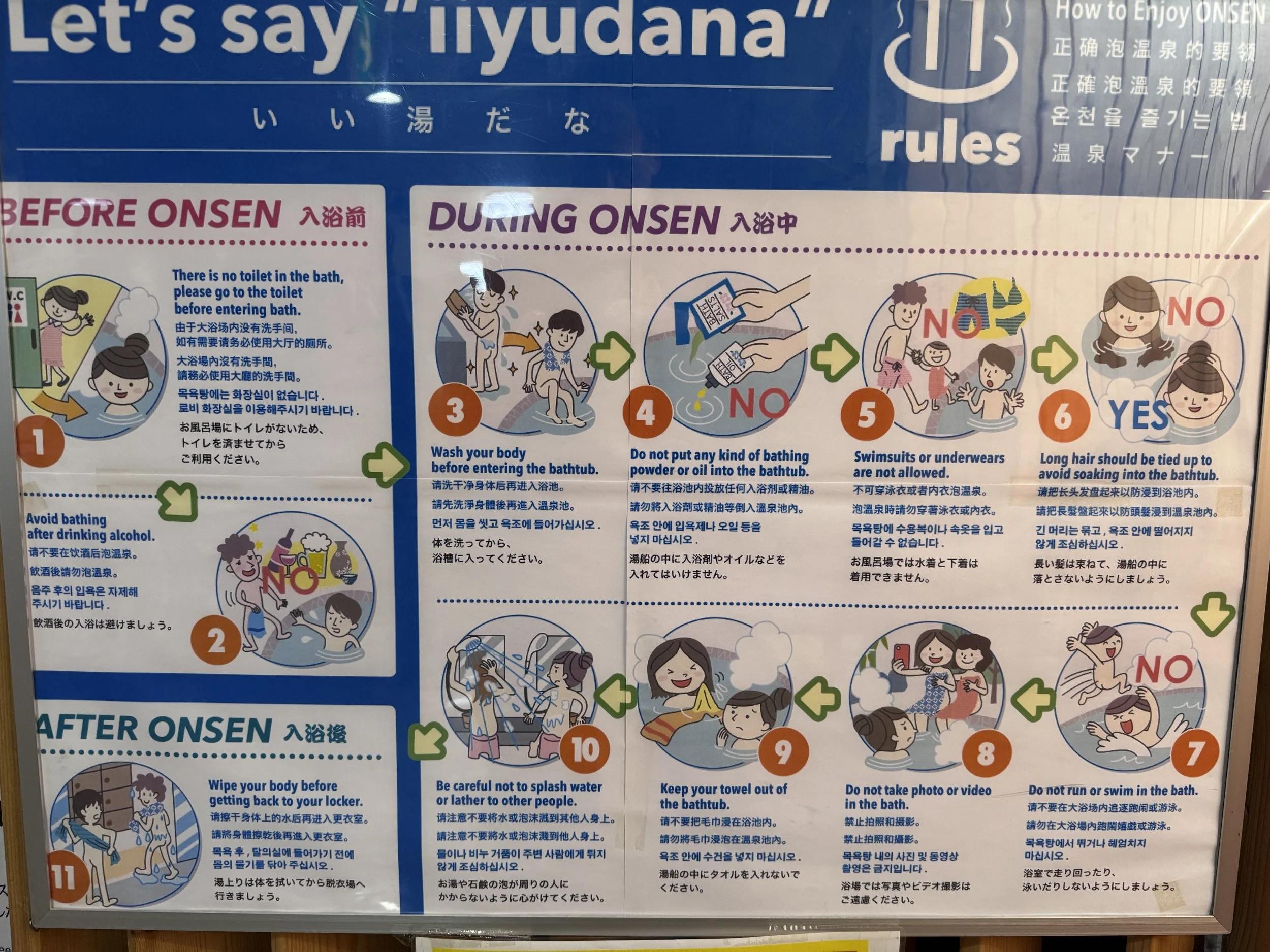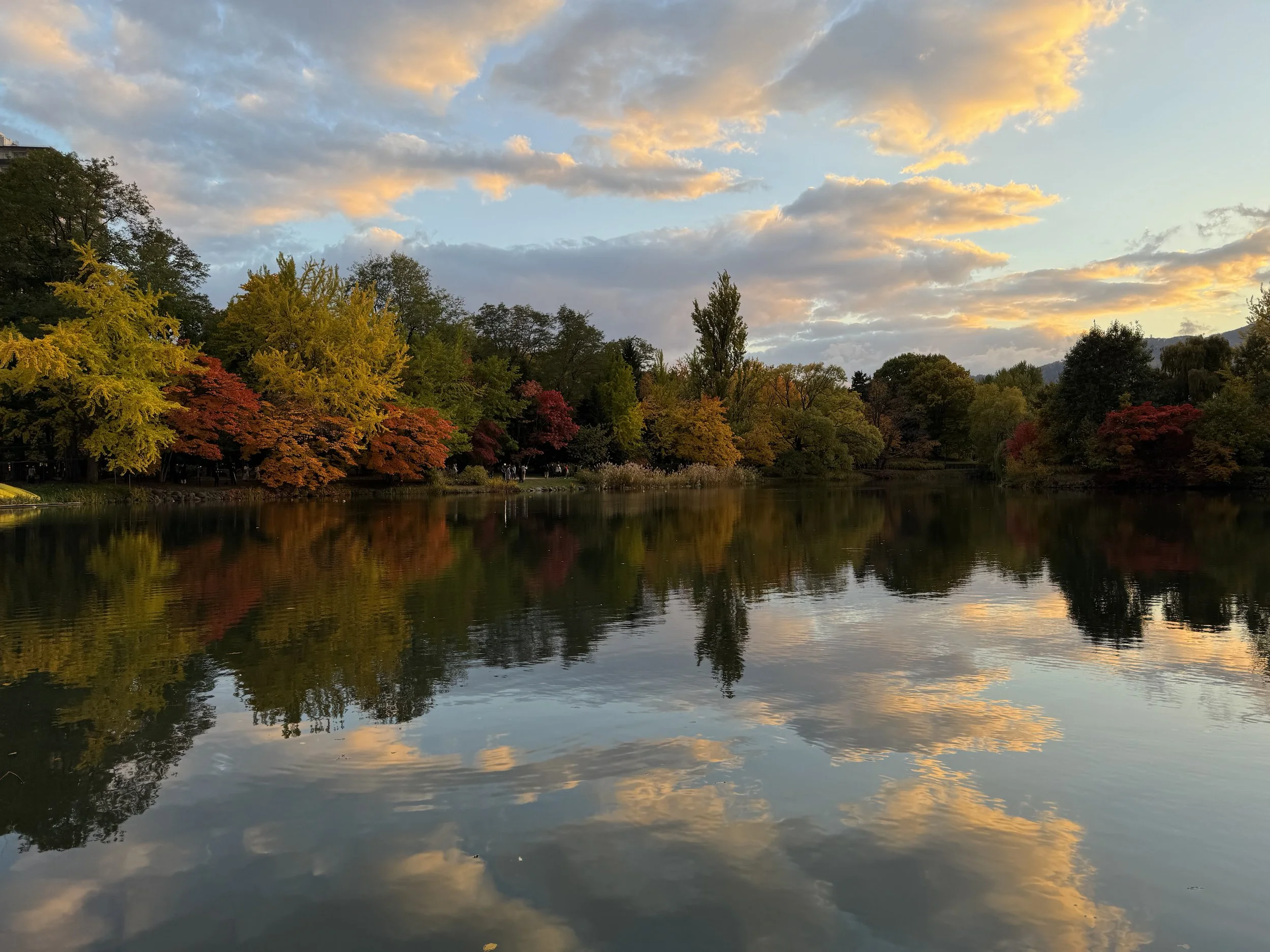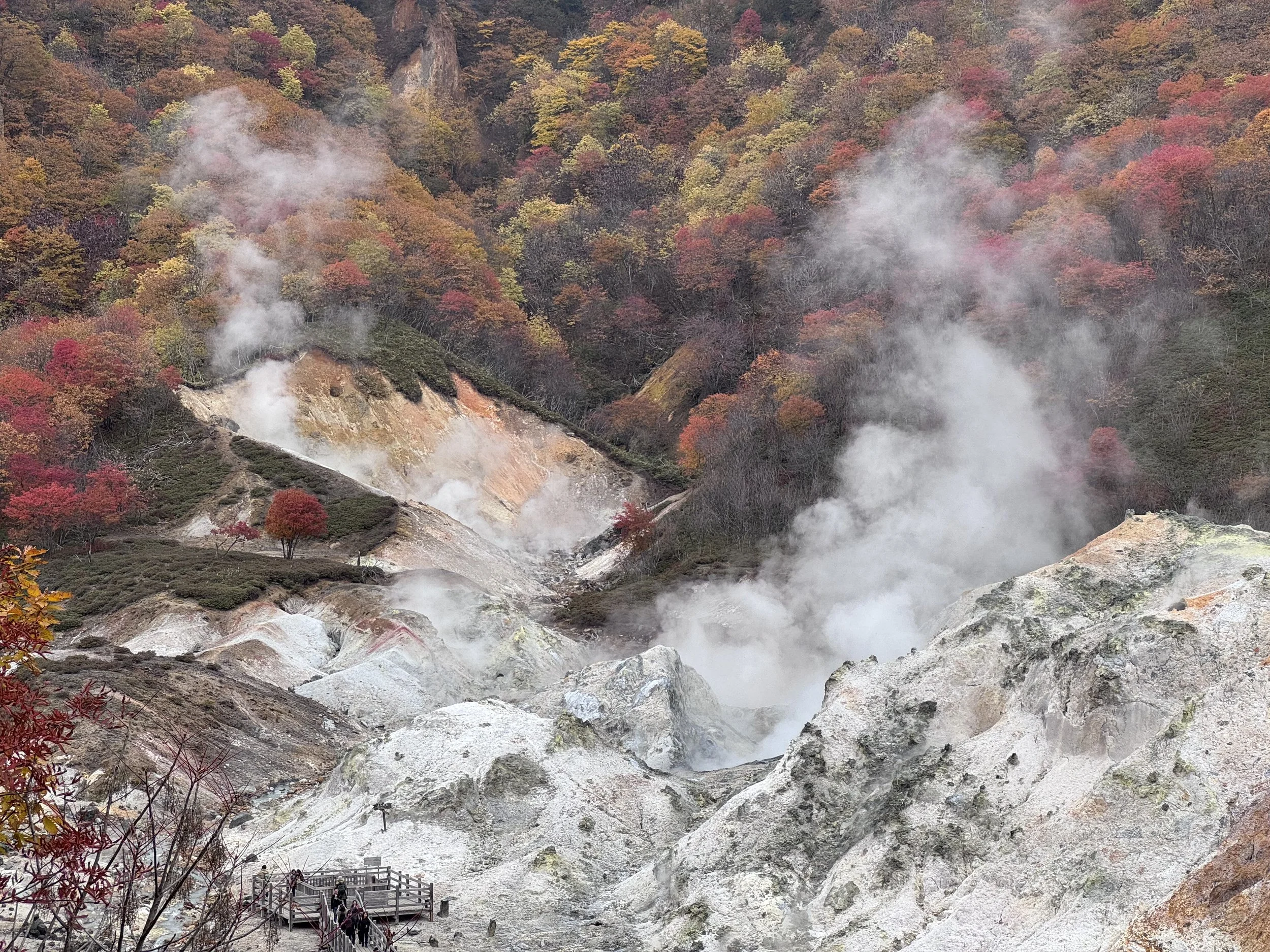It was the first time I’d felt cold since we arrived in Japan. When we stepped out of our hotel in Hakodate to visit the Museum of the Northern People (Ainu) there was a brisk wind blowing. The temperate was about 5 C but it felt much colder. At least the rain had stopped. It was only a few km to the museum but we decided to take transit. It was a straight shot on the streetcar, which was easier to navigate than the Tokyo Subway. As in Tokyo, each stop had a number for the line (e.g. “N”) and a number which goes up or down depending on which direction you are going. This means that even if you get on a tram going the wrong way, you will realize it in one stop.
The museum told a familiar story. The indigenous people of this region were originally met with friendship and opportunities to trade, but as more Japanese people came from the mainland, the Ainu were oppressed, forbidden to practice their traditions or speak their language, and forced to try and assimilate. It is a story as old as people.
The Ainu people still exist but they face economic challenges and probably discrimination like minority people everywhere.
After the museum we headed off to find a vegetarian restaurant we found online. It was about a km walk but when we got there, it was closed (this happens to us a lot!). So back to the street car. By the time we got to it, our ears ached with the cold.
We decided this would best be a “dine in” night so on the way back we popped into a “Combi” (convenience store) for rice balls, sandwiches, snacks, and little bottles of saki (rice wine) that is cheap and excellent.
A tree grows in Hakodate.
The next morning dawned cold but clear. The wind had settled down, so as we had a few hours before our train to Sapporo, we took a look around town. It was early and most things were closed. The town felt deserted and somewhat eerie after the teeming hustle of Tokyo. We picked up a few more rice balls for the train and headed back to the hotel to pack up.
We were staying at a hotel branded “Four Points Flex by Sheraton.” It’s part of the Marriott system, which I like because of points, but this is their budget brand in Japan. The rooms are tiny but as usual everything was immaculately clean. Clean and a bathroom in the room. What else do you need? The cost was under $50 a night!
The train ride to Sapporo was slower and so almost as long as the trip from Tokyo to Hakodate. There is no Shinkansen that runs to Sapporo so we had to take the Express train. Notwithstanding, it was a very pleasant ride with the ocean on one side and the mountains on the other. Unlike in Tokyo, up here the leaves had already started to change and we were treated to a beautiful show of “autumn’s muted madras.”
Anthropomorphic octopus is excited to be eaten by you!
Sapporo is a huge city! It is the 5th largest in Japan and home to about 2 million people. There are several subway lines. Arriving at the main train station we had to take one of the lines 3 stops to our hotel. After checking in, we strolled through a beautiful park right next door where hundreds of people were taking in the fall colors. After sundown, we found an elegant restaurant called “Farm to Table” that served a number of beautifully prepared vegetarian dishes like grilled vegetables, spring rolls, and also cod in a creamy sauce. Everything was delicious.
Our hotel offered a fabulous breakfast buffet and had given us coupons that lowered the cost so we decided to try it. A mix of western and Japanese items meant something for everyone. I had some grilled fish and eggs and also a large salad, which I’d been missing, and some smoked salmon. Barbara, who is not a big fan of fish for breakfast, stuck with eggs and some of the vegetable and potato items. (A few days later we noticed a large contingent of Indian business people staying at the hotel, and the breakfast that morning featured new selections of south Indian dishes. It was as if the hotel staff knew and catered to the particular demographic of the guests!)
Why, yes. Don’t mind if I do!
After breakfast it was time to meet up with Jun who would be picking us up for our mountain biking and spa day.
When we stepped out side, he was already waiting in a Honda minivan with three bikes attached. As we climbed in and buckled up we asked how many others he was picking up.
“It’s just you,” he replied.
It took us about an hour to get where we were going. As previously mentioned Sapporo is a big city and with the traffic it took time to get to the mountains. It was also pretty far. As we gained a little altitude, there was evidence of a recent snowfall on the ground. We parked in the lot at an Onsen (hot spring bath) and headed out on the bikes.
Ready to hit the trails! Glad we brought those gloves!
So it turns out that “mountain biking” meant riding ON mountain bikes. It did not mean going off road on trails. But that was actually fine with me. I’ve never really been mountain biking and I had had visions of barreling down trails at 40 km per hour and cracking my skull open.
This was very mellow.
Japan is an archipelago of islands created by volcanic activity over millions of years and there is still a lot of geothermic activity going down — volcanoes, earthquakes, and in some places steam and hot water flow out of the ground. The land beneath your feet is unquiet.
We rode down to the village where a large collection of Onsen Hotels has grown up around the huge number of hot springs. You can see the steam emerging from various points in the ground. We biked through a number of parks and again the trees were stunning in their fall colors. Then we biked back up the hill to the Onsen where we parked for a shvitz and lunch.
Japanese have a strict protocol about what you are supposed to do and how you are supposed to behave in the Onsen. I had expected a tutorial in advance from our guide but he simply had us pay our fee (1,000 yen or $6.50), handed us our washcloths, and said he’d meet us downstairs when we were finished in an hour.
There was a laminated card of instructions in the lobby but unfortunately, I didn’t see it until after I had bathed.
Make sure to review and follow all the rules when experiencing Onsen for the first time.
The sexes are separate, which makes sense since everyone is completely in the buff, so I headed for the men’s side. I was mortified that I’d make a mistake so I tried to observe what other guys were doing in the locker room but not too closely because, well it’s a locker room.
I knew that you were supposed to be meticulously clean before going into the bath but there were no showers in sight, just a sink, so I was stumped.
I tried to wipe down at the sink as best I could but it seemed insufficient and pointless. Other men were heading into the bath area without preparation so I followed them in.
The showers were in the room with the bath! Along the wall was a row of spigots and handheld shower sprayers with little plastic chairs to sit on. Each “station” had a giant shampoo and a soap dispenser and the pre-bathers were going to town scrubbing themselves to a state of pristine cleanliness.
My only faux pas (that I am aware of) is that you are supposed to take your shower sitting down on the plastic stool, as I realized later, not standing up as I did. But either no one noticed or was too polite to correct me.
After a through scraping down to my primer coat, I got into the bath.
The baths are fed from the local springs and they are hot! I didn’t have a thermometer but I’d guess they were about 105-110 F or about 40-43 C. Maybe a wee bit more. There is one spot where the hot water pours into the pool from a spout so you can kinda of control your temperature by moving closer or farther from the spout. I got as far from the spout as I could and it was still plenty hot.
Nothing except your immaculately clean body is supposed to go in the water and that includes your washcloth which you are required to have with you at all times. That means there is only one thing to do with the washcloth and that is put it on your head, which is exactly what everyone does. The only foreign object permitted in the water is your locker key, which goes on your wrist with an elastic band.
I stayed in the bath for about 20 minutes, after which time I thought I’d likely have a stroke if I didn’t get out. There was an outside part too but I didn’t think I could tolerate the heat any longer and felt I’d had enough. I had sprung for the purchase of a bath towel to dry off (an extra $3.50) which you are encouraged to keep and take home. But I already had a travel towel and no room in my bag for another so I left it in the bin. I don’t know if they toss them or reuse them. Likewise, I returned the washcloth. Opening my locker with the key, which fortunately had the number on it as I had forgotten which locker was mine, I got dressed and went back downstairs to meet up with Jun and Barb.
Seemingly not one for small talk, Jun didn’t want to join us for lunch so he helped us order ours and then went to wait in the car. The food was Indian style curry and naan (surprisingly) and there were several tasty vegetarian dishes. We had one with eggplant and tomatoes and the other was mixed vegetables. The dining area was traditional Japanese style, sitting on the floor on cushions and eating at low tables. The walls were huge glass windows looking out into a beautiful garden with streams and trees.
After lunch, Jun shuttled us back to Sapporo and our hotel. Jun seemed like a very nice, gentle man but, we had realized, didn’t speak a lot of English. He played the radio while we were driving and didn’t seem to care to engage in conversation. That was fine with me. The hot water and hot meal (not to mention the bike ride) had made me sleepy and I was happy to doze as we made our way back through rush hour traffic.
Autumn in Hokkaido, why does it feel so inviting?
With lunch so late and sunset early, skipping dinner seemed prudent. Besides we had another early morning the next day heading to a local park to see the geothermals up close and personal. We were also supposed to go to a bear ranch, whatever that was. This tour would not be picking us up; we’d have to meet the group at Sapporo main train station so we’d need to be up bright and early to get the subway back downtown. Again, I had a feeling of gratitude for the Japanese system of flawless public transport — comprehensive, affordable, and intuitively easy to use.
We’d allow an hour to get there but I knew we’d be early. We wouldn’t have time for breakfast but we’d grab some tuna sandwiches and rice balls at the combi.
About a week into our trip, we were starting to feel we were getting the hang of traveling in Japan. It was easier than we’d imagined.
Checking out the geothermal activity in Shikotsu-Toya National Park, Hokkaido, Japan.
The world’s a narrow bridge; fear nothing.


